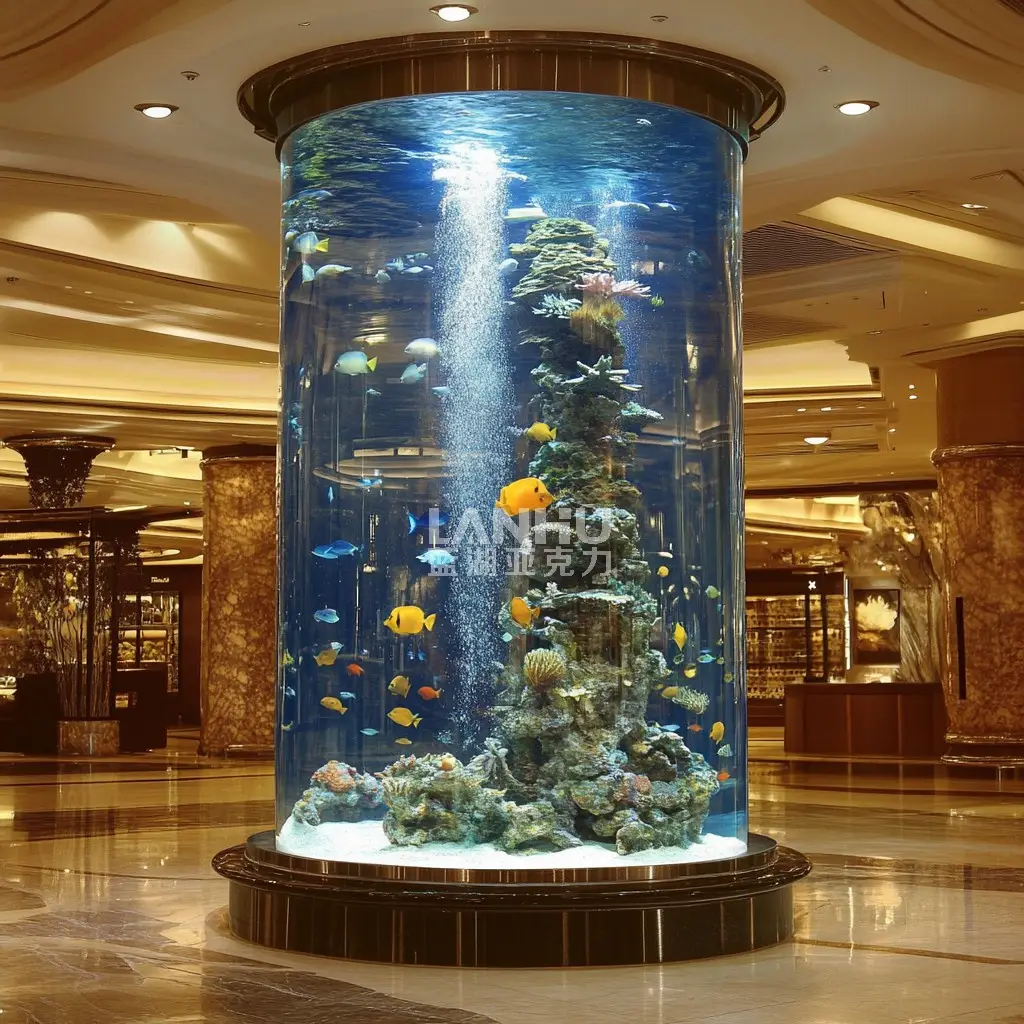Do Acrylic Fish Tanks Easily Develop Limescale?
This is one of the most common questions for people considering buying a fish tank. In fact, the appearance of limescale is not determined by the tank’s material, but rather by the water quality and daily maintenance habits. Whether it’s a glass or acrylic tank, as long as the water contains a high concentration of calcium and magnesium ions, evaporation over time will leave behind white marks—what we commonly call limescale.
So why do many people feel that acrylic fish tanks are more prone to limescale? One reason is that acrylic has very high transparency, giving it a clearer look. Even tiny water spots or deposits become more noticeable. Additionally, if the water is hard or water changes are irregular, limescale can build up more quickly, making the tank look less attractive.

The good news is that cleaning limescale from an acrylic tank is relatively easy. Because acrylic surfaces are smooth, dirt doesn’t penetrate deeply. You can simply use a soft cloth dipped in a little specialized cleaner or white vinegar to gently wipe it away, restoring the tank’s original clarity. It’s important not to use steel wool or rough brushes, as they can scratch the surface. There are also cleaning tools specifically designed for acrylic tanks that remove limescale effectively without damaging the material.

From a practical standpoint, prevention is more important than cleaning. If you use purified or softened water, limescale formation will be greatly reduced. With a bit of regular care—wiping the tank with a soft cloth every few days—you can prevent stubborn buildup entirely. This is especially important for open-top or rimless tanks, where keeping the walls clean helps maintain that crystal-clear look.
In summary, acrylic fish tanks are not inherently “prone to limescale.” Whether limescale forms depends on water quality and maintenance habits. With the right care, an acrylic tank can remain clear and bright for a long time.

 EN
EN
 AR
AR
 BG
BG
 HR
HR
 CS
CS
 DA
DA
 NL
NL
 FI
FI
 FR
FR
 DE
DE
 EL
EL
 HI
HI
 IT
IT
 JA
JA
 KO
KO
 NO
NO
 PL
PL
 PT
PT
 RO
RO
 RU
RU
 ES
ES
 SV
SV
 CA
CA
 TL
TL
 IW
IW
 ID
ID
 LV
LV
 LT
LT
 SR
SR
 SK
SK
 UK
UK
 VI
VI
 ET
ET
 GL
GL
 HU
HU
 TH
TH
 TR
TR
 FA
FA
 AF
AF
 MS
MS
